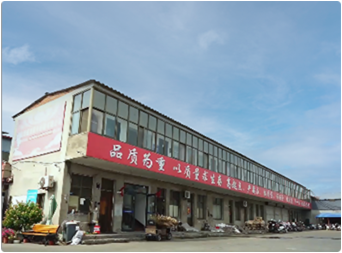aug . 16, 2024 10:50 Back to list
Wire Rope Saddle Clamps for Secure and Reliable Lifting Solutions in Various Applications
Understanding Wire Rope Saddle Clamps A Comprehensive Overview
Wire rope saddle clamps are essential hardware components widely used across various industries, particularly in lifting, rigging, and construction applications. Their primary purpose is to secure wire ropes by forming secure loops, ensuring safety and reliability during operations. In this article, we will explore the design, functionality, applications, and best practices associated with wire rope saddle clamps.
Design and Components
A wire rope saddle clamp typically consists of several key components the saddle (or plate), the U-bolt, and nuts. The saddle is designed to sit atop the wire rope, ensuring that it tightly grips the rope when the U-bolt is tightened. The U-bolt is a curved metal rod that wraps around both sides of the rope and is secured with two nuts. This design allows the clamp to create a loop in the wire rope that can withstand significant loads, making it an indispensable tool in lifting and towing operations.
Functionality
The primary function of wire rope saddle clamps is to create a secure, anchored loop at the end of a wire rope. This loop can be used for various purposes, such as attaching hooks, shackles, or other rigging equipment. The effectiveness of the clamp relies heavily on proper installation. The saddle should always be placed on the live end of the rope (the part that moves), while the U-bolt should be positioned on the dead end (the part that does not move). This configuration ensures optimal strength and prevents slippage.
Applications
Wire rope saddle clamps are utilized in numerous applications. In the lifting industry, they are commonly used in constructing slings for cranes, hoists, and other lifting devices. In construction, they secure rigging equipment to scaffolding and other structures. Additionally, they are frequently employed in marine applications for mooring lines and towing cables.
Because of their versatility, these clamps are found in sectors ranging from mining, aviation, and telecommunication to entertainment and sports. Their reliability under heavy loads and varying environmental conditions makes them a popular choice for many professionals.
wire rope saddle clamps

Safety Considerations
While wire rope saddle clamps are generally robust and reliable, safety should always be a priority. Proper selection, installation, and maintenance of these clamps are crucial to avoid accidents. Here are some best practices to ensure safety
1. Selecting the Right Size Always choose clamps that match the diameter of the wire rope. Using clamps that are too small can cause slippage, while oversized clamps may not secure the rope adequately.
2. Correct Installation Follow the manufacturer’s instructions during installation. Ensure that the saddle is aligned correctly, and the U-bolt is tightened evenly to distribute the load properly.
3. Regular Inspections Periodically inspect clamps for signs of wear, corrosion, or deformation. Replace any damaged components immediately to maintain safety.
4. Load Testing Before use, especially after installation, conduct load testing to ensure that the setup can handle the expected weight safely.
5. Training Ensure that workers handling wire rope clamps are adequately trained. They should understand the proper procedures for installation, maintenance, and safety measures.
In conclusion, wire rope saddle clamps play a vital role in securing wire ropes across various industries. Understanding their components, functionality, and best practices is essential for ensuring safety and effectiveness in all applications. With proper care and diligent safety measures, these clamps can provide secure and reliable performance, contributing to successful operations in lifting, rigging, and construction tasks.
-
The Ubiquitous Reach of DIN934 in Application Realms
NewsMay.16,2025
-
Exploring Different Bolt Types
NewsMay.16,2025
-
Cracking the Code of Sleeve Anchor Mastery
NewsMay.16,2025
-
Clamp Design Principles,Types and Innovations
NewsMay.16,2025
-
Artistry Inspired by the Humble Anchor Bolt
NewsMay.16,2025
-
A Deep Dive into Screw Types
NewsMay.16,2025


